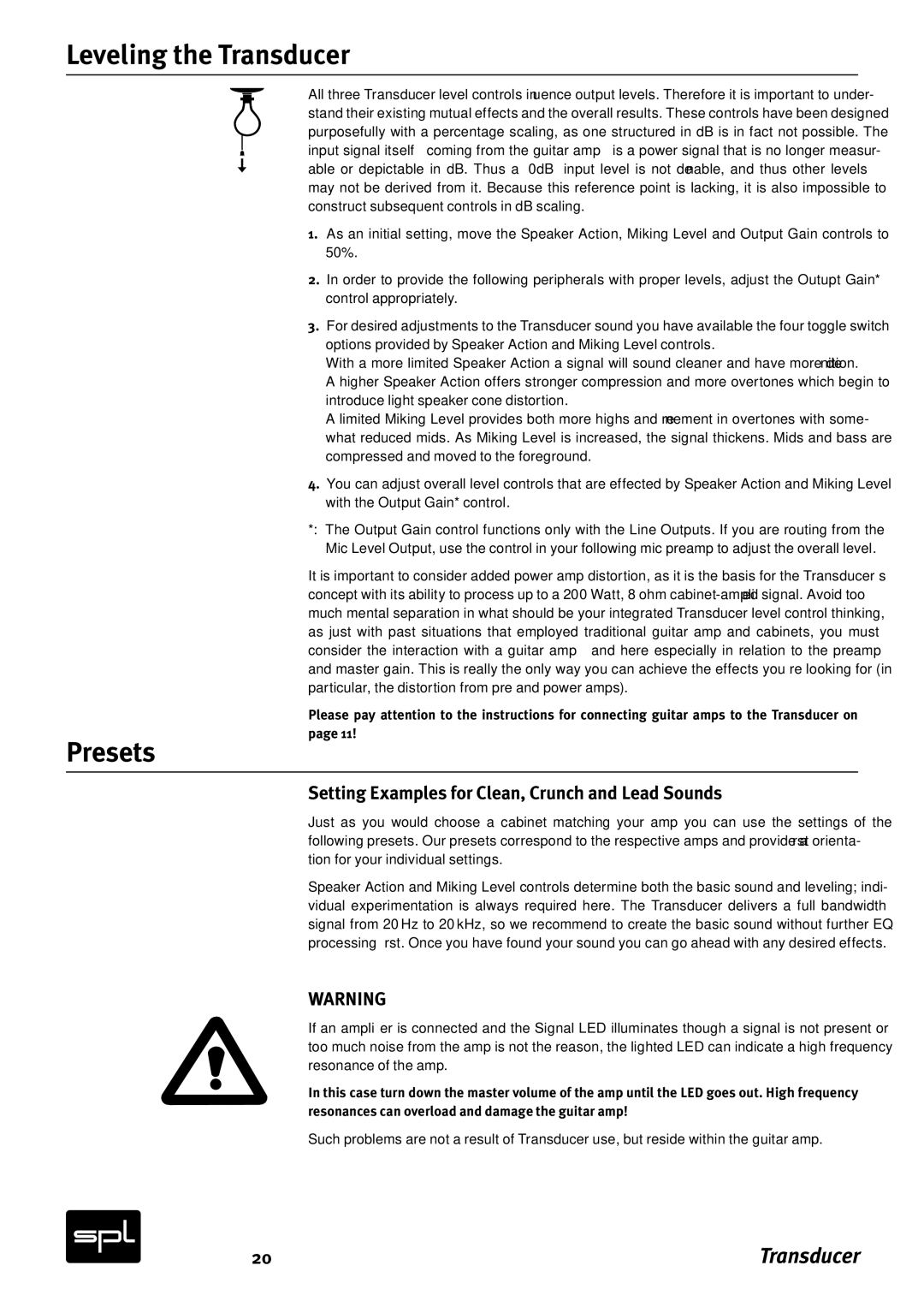
Leveling the Transducer
All three Transducer level controls influence output levels. Therefore it is important to under- stand their existing mutual effects and the overall results. These controls have been designed purposefully with a percentage scaling, as one structured in dB is in fact not possible. The input signal itself – coming from the guitar amp – is a power signal that is no longer measur- able or depictable in dB. Thus a “0dB” input level is not definable, and thus other levels may not be derived from it. Because this reference point is lacking, it is also impossible to construct subsequent controls in dB scaling.
1.As an initial setting, move the Speaker Action, Miking Level and Output Gain controls to 50%.
2.In order to provide the following peripherals with proper levels, adjust the Outupt Gain* control appropriately.
3.For desired adjustments to the Transducer sound you have available the four toggle switch options provided by Speaker Action and Miking Level controls.
With a more limited Speaker Action a signal will sound cleaner and have more definition. A higher Speaker Action offers stronger compression and more overtones which begin to introduce light speaker cone distortion.
A limited Miking Level provides both more highs and refinement in overtones with some- what reduced mids. As Miking Level is increased, the signal thickens. Mids and bass are compressed and moved to the foreground.
4.You can adjust overall level controls that are effected by Speaker Action and Miking Level with the Output Gain* control.
*: The Output Gain control functions only with the Line Outputs. If you are routing from the Mic Level Output, use the control in your following mic preamp to adjust the overall level.
It is important to consider added power amp distortion, as it is the basis for the Transducer‘s concept with its ability to process up to a 200 Watt, 8 ohm
Please pay attention to the instructions for connecting guitar amps to the Transducer on page 11!
Presets
Setting Examples for Clean, Crunch and Lead Sounds
Just as you would choose a cabinet matching your amp you can use the settings of the following presets. Our presets correspond to the respective amps and provide a first orienta- tion for your individual settings.
Speaker Action and Miking Level controls determine both the basic sound and leveling; indi- vidual experimentation is always required here. The Transducer delivers a full bandwidth signal from 20 Hz to 20 kHz, so we recommend to create the basic sound without further EQ processing first. Once you have found your sound you can go ahead with any desired effects.
WARNING
If an amplifier is connected and the Signal LED illuminates though a signal is not present or too much noise from the amp is not the reason, the lighted LED can indicate a high frequency resonance of the amp.
In this case turn down the master volume of the amp until the LED goes out. High frequency resonances can overload and damage the guitar amp!
Such problems are not a result of Transducer use, but reside within the guitar amp.
20 | Transducer |
